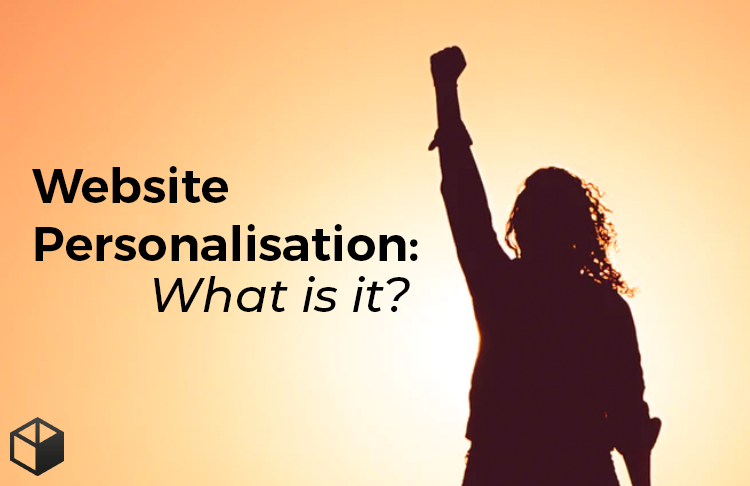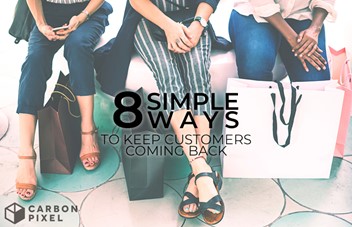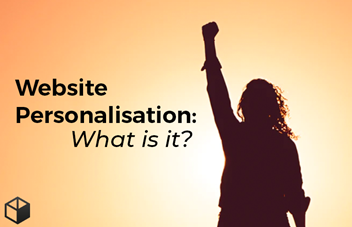Website personalisation is essentially the practice of adding an extra element to the suer journey of your website, where you display the users preferences and details, such as their name, change elements based on their colour choices. Basically it's all about giving each users a different experience to help aid conversion.
When used correctly, websites can tailor their generic website to present visitors with personalised content, to provide a user friendly route to the content that a particular visitor cares about, or even change around elements and colours based on the users preferences.
Personalisation requires data, usually the data stored in your CRM, such as a users name, age, location and purchase history. This data is passed through to your website in order to display the desired value where you require it through the aid of tokens (such as {{first.name}})
Let's take facebook for example, you see personalisation everywhere;
- Your newsfeed: Facebook works out who you interact with most, the sort of content you like the most and the pages you like to create a tailored newsfeed to show you content you'll care about
- Ads: Facebook uses your interests to tailor ads that you'll most likely click on
- Marketplace: Again, using your shopping and browsing history as well aa your interests, facebook displays items for sale locally in a way that you'll be more likely to buy and quickly find what you are looking for
And the most obvious one, Facebook includes your name in certain elements, like the new status box.


You may well be thinking "wow gosh this is amazing, what a cool new trend!" but in actual fact, personalisation has been around for many, many years and you probably already do it with your emails when you address the email to the recipient or include their name in the subject line. If you've done A/B testing with your emails, you'll probably notice a spike in open rates when you use personalisation in the subject or pre-header.
Website personalisation is the same concept, but well, on your website.
Why you should care about website personalisation?
Each customer is different, each customer wants different things and as such people have become more intertwined in the digital age. The demands and expectations of customers have continued to grow too, customers no longer want to see the same old website homepage every time they visit your site. They like to see change.
" If we have 4.5 million customers, we shouldn’t have one store. We should have 4.5 million stores. "
- Jeff Bazos, Amazon
Most customers won't be able to describe what sets a good website apart from a bad one, but they will certainly remember the websites that gave them a simple, easy user experience and made them feel valued/ Most users might not even be aware that elements of content on websites are personalised, they’ll just see that website as ‘helpful,’ or ‘easy to navigate.’ and feel 'cool' because it says their name.
Whilst the Facebook example is quite simple yet extremely complex at the same time, it creates a seamless experience that the user actually cares about and I believe that website personalisation is best utilised when it’s improving the user’s experience.
Some great examples of personalisation you can implement on your website are;
- Including the users name
- Displaying a happy birthday message on a users birthday
- Changing the colour of a CTA based on the users favourite colour
- Adapting a landing page based on the geographical location of the user
- Personalising content on a landing page to reference the specific search query that a user typed into a search engine
- Changing how a website attempts to convert a user depending upon whether the user is on a mobile device or desktop. (ie. ‘give us a call,’ in place of an online form).
- Changing the content and imagery on a website depending upon the time or day
- Adapting the homepage to show suggestions based on a users browsing and shopping history
These are all pretty fairly basic personalisation experiences to create, taking a lot less time and resource than you might think and can most likely be done with your CRM system or a third party marketing automation or personalisation software such as Marketo.
Personalisation experiences such as these offer an amazing opportunity for local businesses, as there is almost always a conversion rate improvement to be gained through the personalisation of content. It’s simple, we know users will convert better on a website which is personalised to them – yet for some reason brands are still slow to adopt this technology because most people believe it takes time and is a breach of GDPR which it is not.
Without a doubt, if you sell products online you should consider website personalisation. You'll already have a mound of data you can begin with, such as a customers name, age, location and shopping history so use that data to create personalised homepages, shopping feeds and welcome them to your website with a simple "Welcome back, Ashley"
These small touches make your user experience feel more personal to the customer and as such, improved your conversion rate because you're displaying products you know you're customer might like over displaying a mound of products you think they might like.
We love creating websites here that uses website personalisation to improve the customer journey, so speak to us today and we'll help you get setup and put you on your way to becoming a conversion wizard.




